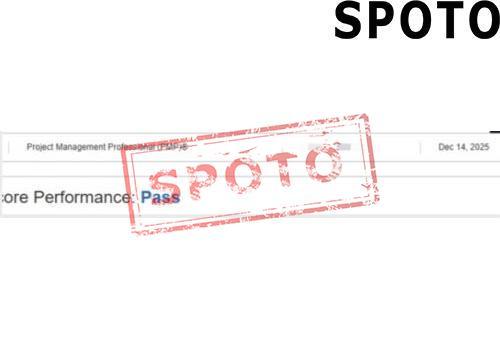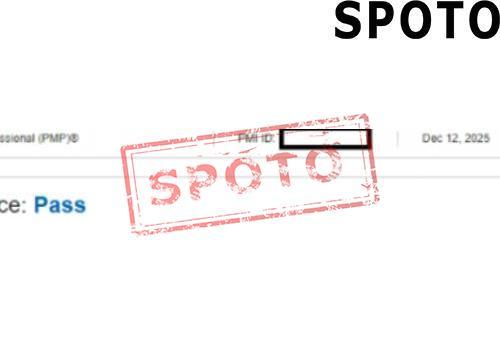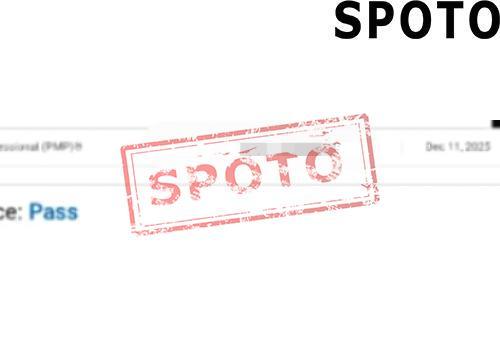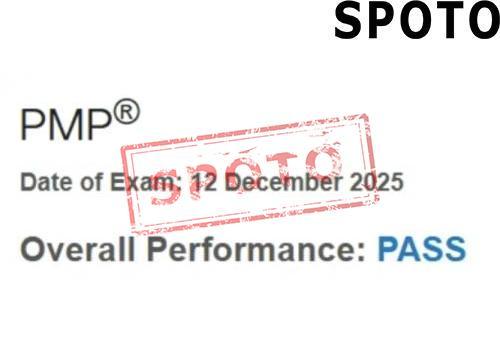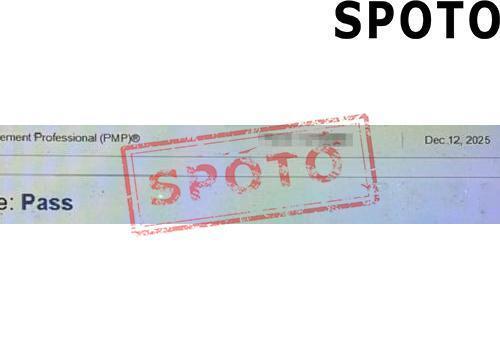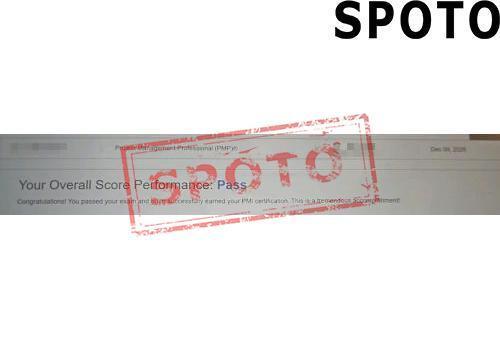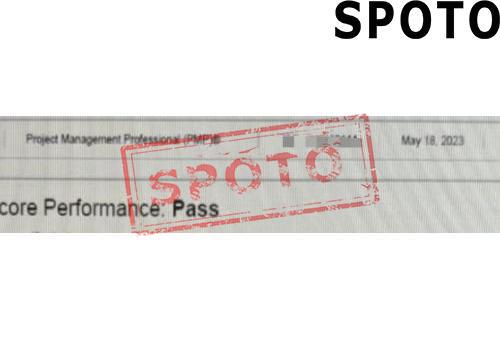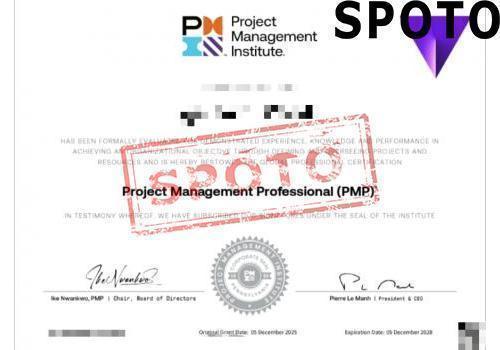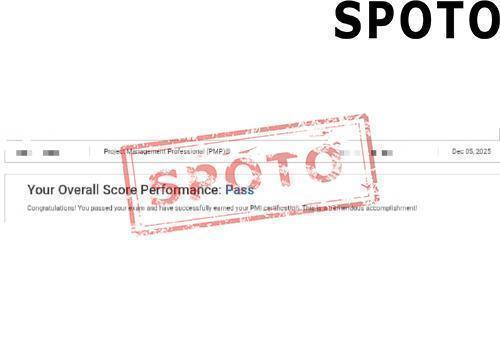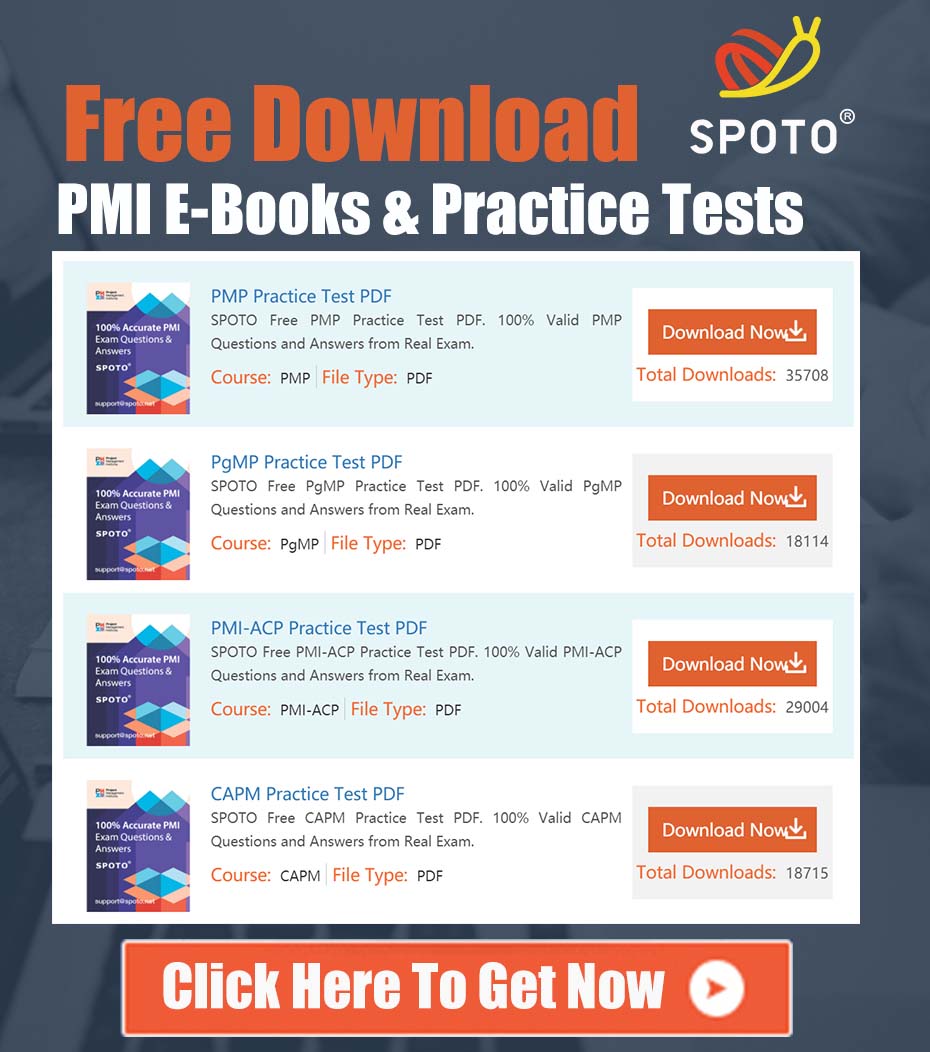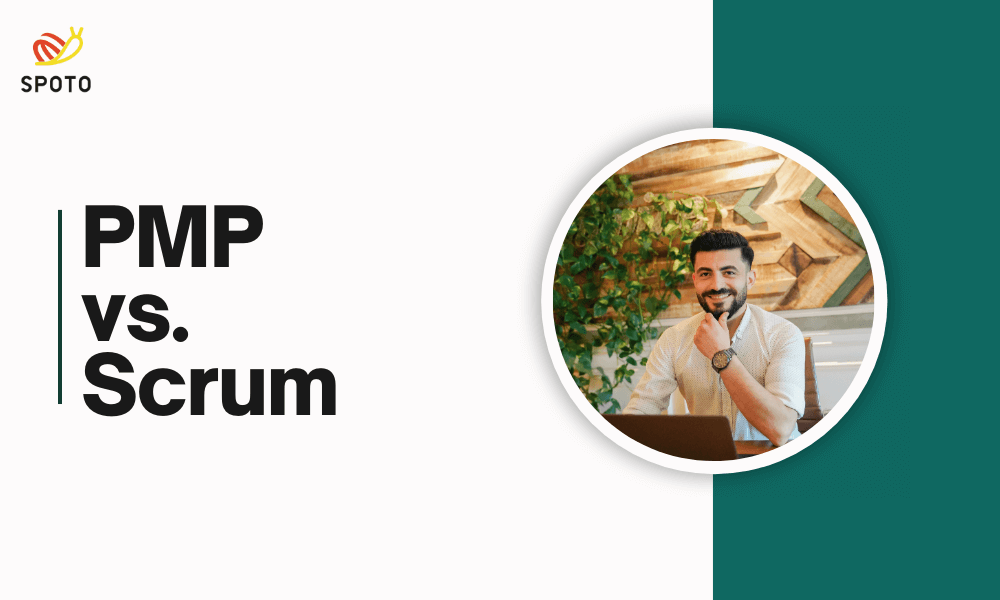
Table of Contents
As the complexity of project management has increased, various project management methodologies have emerged to address different challenges and needs. Among the many, the Project Management Professional (PMP) and Scrum stand out as two distinct approaches in the field of project management.
The PMP, a certification offered by the Project Management Institute (PMI), follows a more traditional, structured project management process that emphasizes upfront planning and documented management. It is suitable for project environments where requirements are clear and objectives are fixed.
On the other hand, Scrum, a framework under the Agile Manifesto, emphasizes team self-organization, iterative progress, and rapid response to change. It is particularly well-suited to projects with evolving requirements that require a high degree of flexibility and customer engagement.
Scrum facilitates team collaboration and continuous improvement through a series of lightweight processes and rituals, such as sprints, Scrum meetings, and product backlogs.
In the practice of project management, PMP and Scrum each have their own strengths and applicability scenarios, and their application in different industries and project types demonstrates the diversity and adaptability of project management methodologies. This blog will delve into the similarities and major differences between these two approaches and analyze their status and role in modern project management.
PMP Certification Overview
What is PMP Certification?
PMP (Project Management Professional) certification is a professional qualification issued by the Project Management Institute (PMI). It not only represents a certification, but also a project management practice standard, covering a comprehensive knowledge system of project management. The PMP core principles and processes follow the PMI's "Project Management Body of Knowledge Guide" (PMBOK Guide), which describes in detail the best practices and standards of project management.
PMP Process
The PMP project management process follows five basic stages:
- Initiate: Defines the project objectives, assesses the feasibility of the project, and formally authorizes the project to begin.
- Plan: Involves all planning activities for the project, including scope management, time planning, cost budgeting, quality standards, resource allocation, communication plans, and risk management.
- Execute: Implements the project work according to the plan developed in the planning stage, ensuring that resources are effectively utilized, and team members are acting in accordance with the plan.
- Monitor and Control: Tracks project progress, compares it to the plan, and makes adjustments when necessary to ensure that the project goals are achieved.
- Close: Completes all project activities, delivers the project results, formally ends the project, and reviews and archives project documents.
PMP Role
In the PMP method, the Project Manager (PM) plays a core role, responsible for the overall management of the project. The Project Manager's responsibilities include:
- Developing and maintaining the project plan
- Coordinating team members and stakeholders
- Ensuring the project is executed according to the plan and meets the set objectives
- Managing project risks and issues
- Maintaining project communication and ensuring information transparency
Application Scenarios
The PMP methodology is particularly suitable for projects that have clear requirements, fixed objectives, and fewer changes. This includes, but is not limited to:
- Construction and engineering: infrastructure development, large-scale construction projects, etc.
- Information Technology: system upgrades, software development, etc.
- Manufacturing: product design, production line improvements, etc.
- Government and non-profit organizations: public service projects, social welfare projects, etc.
In these scenarios, the structured and predictable project management process provided by PMP can help project teams effectively control the project schedule and quality, and reduce uncertainty and risk.
PMP Certification Made Easy with SPOTO
Scrum Overview
What Is Scrum?
Scrum is an agile project management framework that emphasizes an iterative and incremental product development process. The core principles and values of Scrum include transparency, inspection, adaptation, teamwork, self-organization, and continuous improvement. Scrum is designed to create an environment in which teams can respond quickly to change and consistently deliver value to customers.
Scrum Process
The Scrum process is centered around sprints, each of which typically lasts two to four weeks. The sprint process includes the following stages:
- Sprint Planning: At the beginning of the sprint, the team decides what they want to accomplish in the current sprint, including the selection of user stories and tasks.
- Daily Scrum: Also known as a stand-up meeting, team members gather once a day to discuss their progress, plans, and any roadblocks.
- Sprint Review: At the end of the sprint, the team presents the results of the sprint to stakeholders and collects feedback.
- Sprint Retrospective: The team reviews the sprint just completed and discusses what went well, what needs to be improvement, and how.
Scrum Roles
The three main roles in Scrum are:
- Product Owner: Responsible for defining the product vision, managing the Product Backlog, and ensuring that the team understands the priorities of the to-do list.
- Scrum Master: Responsible for ensuring that the Scrum framework is properly understood and implemented, helping team members resolve issues that impede progress, and protecting the team from external interference.
- Development Team: A self-organizing, cross-functional team that is responsible for delivering the work items in the product's to-do list. Team members may include programmers, designers, testers, and business analysts.
Application Scenarios
The Scrum methodology is particularly suited to projects that have changing needs and require rapid iteration and innovation. This includes, but is not limited to:
- Software development: Rapidly develop and iterate on new software products or features.
- Product Development: Design and iterate on new physical products or services.
- Research & Development: in areas where uncertainty is high and requires frequent experimentation and adaptation.
- Service Innovation: in service industries such as financial services, healthcare, or education, to quickly respond to market changes and provide innovative services.
In these scenarios, Scrum's flexibility and ability to respond quickly to change can help teams stay competitive and consistently deliver high-quality products or services.
Scrum Certified in a Snap with SPOTO
Similarities Between PMP and Scrum
PMP (Project Management Professional) and Scrum, as two different project management methodologies, have some commonalities and similarities despite the differences in philosophy and practice:
- Goal Oriented: Both PMP and Scrum are designed to help project teams reach common project goals. They both emphasize the ultimate goal of project success, even if the methods for reaching it are different.
- Stakeholder Involvement: Both approaches recognize the importance of stakeholder involvement, whether through PMP's communication management or Scrum's sprint reviews and co-development of the product backlog.
- Process Improvement: Both PMP and Scrum encourage continuous process improvement. PMP does this through the documentation of lessons learned during the project closeout phase, while Scrum achieves it through the sprint review meetings.
- Risk Management: Both incorporate the concept of risk management. PMP has a dedicated risk management process, while Scrum identifies and responds to risks early through an iterative and incremental approach.
- Adaptability: Although PMP focuses more on upfront planning, it also provides a change management process to adapt to changes during the course of the project. Scrum adapts to changes through short cycle sprints and frequent retrospectives.
- Documentation and Records: Both PMP and Scrum require proper documentation and records to track project progress and decision making. While PMP may focus more on detailed documentation, Scrum prefers streamlined and necessary documentation.
- Quality Management: Both approaches emphasize the quality of project deliverables. PMP ensures that project deliverables meet expected standards through quality management processes, while Scrum ensures quality through sprint goals and review meetings.
- Teamwork: Both PMP and Scrum recognize the importance of teamwork. PMP coordinates the team through the project manager, while Scrum facilitates teamwork through self-organizing teams and the Scrum Master.
- Value Delivery: Both emphasize the delivery of value to the customer. PMP does this through project deliverables, while Scrum does it through deliverable increments at the end of each sprint.
- Principles and Standards: PMP is guided by PMI's Project Management Body of Knowledge (PMBOK), while Scrum follows the principles of the Agile Manifesto. Both provide a standardized set of practices and principles.
Differences Between PMP and Scrum
PMP follows the traditional project management methodology, which focuses on the overall planning, execution, monitoring, and closure of the project, emphasizing the importance of documentation and upfront planning.
Scrum is an agile methodology that focuses on iterative and incremental project management, emphasizing team self-organization, cross-functional collaboration, and rapid response to change.
Differences in Process:
The PMP process typically includes phases of initiation, planning, execution, monitoring, control, and closing.
The Scrum process is centered on sprints, and each sprint includes sprint planning, daily Scrum, sprint review, and sprint retrospective.
Differences in Roles:
In PMP, the Project Manager (PM) is the main person in charge of the project and is responsible for the planning and management of the entire project.
In Scrum, there are three main roles: the Product Owner (responsible for defining the product vision and priorities), the Scrum Master (responsible for ensuring the proper implementation of the Scrum process), and the Development Team (a self-organizing, cross-functional team responsible for delivering the product).
Differences in Application Scenarios:
PMP is suitable for projects with clear requirements and little change, and it provides a structured and predictable way of managing projects.
Scrum is suitable for projects with changing requirements that require rapid iteration and response to market changes.
Differences in Certification:
PMP is a professional certification offered by the Project Management Institute (PMI), which requires the holder to have certain project management experience and educational background.
Scrum also has certifications such as the Certified Scrum Master (CSM), offered by organizations like the Scrum Alliance, which focus on agile practices and the application of the Scrum framework.
Adaptability to Change:
The PMP method works well when the project needs and goals are clear, and the handling of changes in requirements may not be flexible enough.
The Scrum methodology, on the other hand, emphasizes adaptability and flexibility, and is better able to respond to changing requirements.
Documentation & Transparency:
PMP emphasizes the importance of documentation as an important basis for communication and decision-making.
Scrum, while also requiring documentation, focuses more on face-to-face communication and transparency, such as facilitating communication between teams through Scrum meetings and artifacts like the Product Backlog.
How to Choose Suitable Certification - PMP or Scrum?
In the diverse field of project management, PMP (Project Management Professional) and Scrum are two mainstream project management methodologies that each show unique advantages in different project environments and organizational cultures. As the practice of project management continues to evolve, choosing the right methodology is critical to ensuring project success.
1. Project Requirements
When choosing a project management approach, the first thing to consider is the specific needs of the project. Factors such as the nature of the project, its objectives, its complexity, and the resources required will influence the choice of methodology.
- Clarity of Requirements: If the project requirements are known in advance and relatively fixed, the rigorous planning and structured process of PMP may be more appropriate. Conversely, if the project requirements are expected to change more, Scrum's flexibility and iterative approach may be more suitable.
- Project Size: For large projects or large programs with multiple sub-projects, the hierarchical management and detailed planning of PMP may be more suitable. Scrum, on the other hand, is more suitable for small to medium-sized teams that need to respond quickly.
2. Team Culture
The team's work style and culture are also important considerations when choosing a project management approach.
- Team Preference: Team members' familiarity and preference for project management methods can influence the team's acceptance and implementation. If the team is already accustomed to agile practices, Scrum may be a more natural choice.
- Teamwork: Scrum emphasizes self-organization and cross-functional collaboration of teams, and may be more effective if the team culture supports a high degree of collaboration and self-management.
- Team Size: PMP is suitable for large teams and multi-level organizations, while Scrum is often more advantageous in small, close-knit teams.
3. Change Management
The frequency of changes in project requirements and the team's ability to adapt to changes are key factors in choosing a project management approach.
- Frequency of Change: In an environment where requirements are constantly changing, Scrum's short sprint cycles and frequent retrospectives help to adapt quickly to change.
- Coping Strategy: If the project needs to be able to flexibly adjust priorities and direction, the adaptability provided by Scrum may be more in line with the needs. PMP, on the other hand, is more suitable for projects where requirements change infrequently, or where changes can be handled through a formal change management process.
- Risk Management: PMP provides a complete set of risk management processes and may be more appropriate if the project is exposed to higher risk or requires strict risk control.
The choice of PMP or Scrum should be based on a combination of project requirements, team culture, and change management capabilities. There is no one-size-fits-all approach, so organizations should choose the methodology that maximizes the success of their project based on their specific circumstances and project characteristics.
Conclusion
PMP and Scrum each have unique strengths suited to different project environments. PMP's structured approach excels in projects with well-defined requirements, providing comprehensive processes to ensure predictable outcomes. Scrum's iterative and adaptive nature is better suited for projects with evolving requirements, enabling rapid response to change.
The choice between PMP and Scrum depends on the project's specific needs, the team's work culture, and the ability to adapt to change. Understanding the core strengths of each methodology and applying it flexibly is key to improving project success and achieving goals.
Ultimately, the success of project management relies on the team's deep understanding and effective execution of the chosen methodology. Continuous evaluation, learning, and adaptation are important to maximize the benefits of the selected approach.

